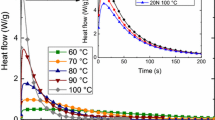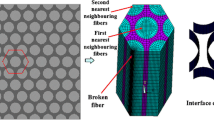Abstract
Epoxy resins filled with dielectric mineral particles are frequently used as insulating materials in power industry applications. Due to their excellent dielectric properties and relatively good thermal performance (resistance, ageing and conductivity) their usability is common and extensive. However, the mechanical performance of the resins is influenced by several factors such as resistance to crack propagation, especially in low temperature applications. This phenomenon is normally linked with appearance of two phase systems where particle filled epoxy material interacts with metallic inserts having significantly different thermal expansion coefficients. This kind of epoxy-metal interface can produce relatively high stresses in the product structure during thermal cycle loading. The paper deals with mechanical problems of power industry products and introduces the methodology for numerical modeling of failure in silica filled epoxy systems subjected to severe temperature gradients. Various aspects of material behavior modeling are covered in this article, including polymerization process, viscoelastic stress relaxation as well as stochastic cracking.












Similar content being viewed by others
References
Weitsman, Y.: Residual thermal stresses due to cool-down of epoxy-resin composites, Transactions of the ASME. J. Appl. Mech. 46(3), 563–7 (1979)
Qizhou, Y., Jianmin Q.: Effect of thermal residual stresses on the apparent interfacial toughness of epoxy/aluminum interface, Proceedings International Symposium on Advanced Packaging Materials. Processes, Properties and Interfaces, pp. 333–336, (1999)
Ashcroft, I.A., Yu, Y., Swallowe, G.: An experimental investigation of residual stresses in an epoxy-steel laminate. Int. J. Adhes. Adhes. 26(7), 511–19 (2006)
Negi, L.S. Strength of materials, New Delhi : Tata McGraw-Hill Publishing Company Limited (2008)
Ferry, J.D.: Viscoelastic properties of polymers. Wiley, New York (1980)
Williams, M.L., Landell, R.F., Ferry, J.D.: The temperature dependence of relaxation mechanisms in amorphous polymers and other glass-forming liquids. J. Am. Chem. Soc. 77, 3701–3707 (1955)
Kamal, M.R., Sourour, S.: Kinetics and thermal characterization of thermoset cure. Polym. Eng. Sci. 13(1), 59–64 (1973)
Nowak, T., Sekula, R., Saj, P., Kasza, K.: Influence of postcuring conditions on the processing characteristic of epoxy resin. Adv. Polym. Technol. 25(1), 51–62 (2006)
Author information
Authors and Affiliations
Corresponding author
Rights and permissions
About this article
Cite this article
Kmita, G., Nowak, T. & Sekula, R. Modeling and Prediction of Thermal Cycle Induced Failure in Epoxy-Silica Composites. Appl Compos Mater 19, 65–78 (2012). https://doi.org/10.1007/s10443-010-9181-8
Received:
Accepted:
Published:
Issue Date:
DOI: https://doi.org/10.1007/s10443-010-9181-8




